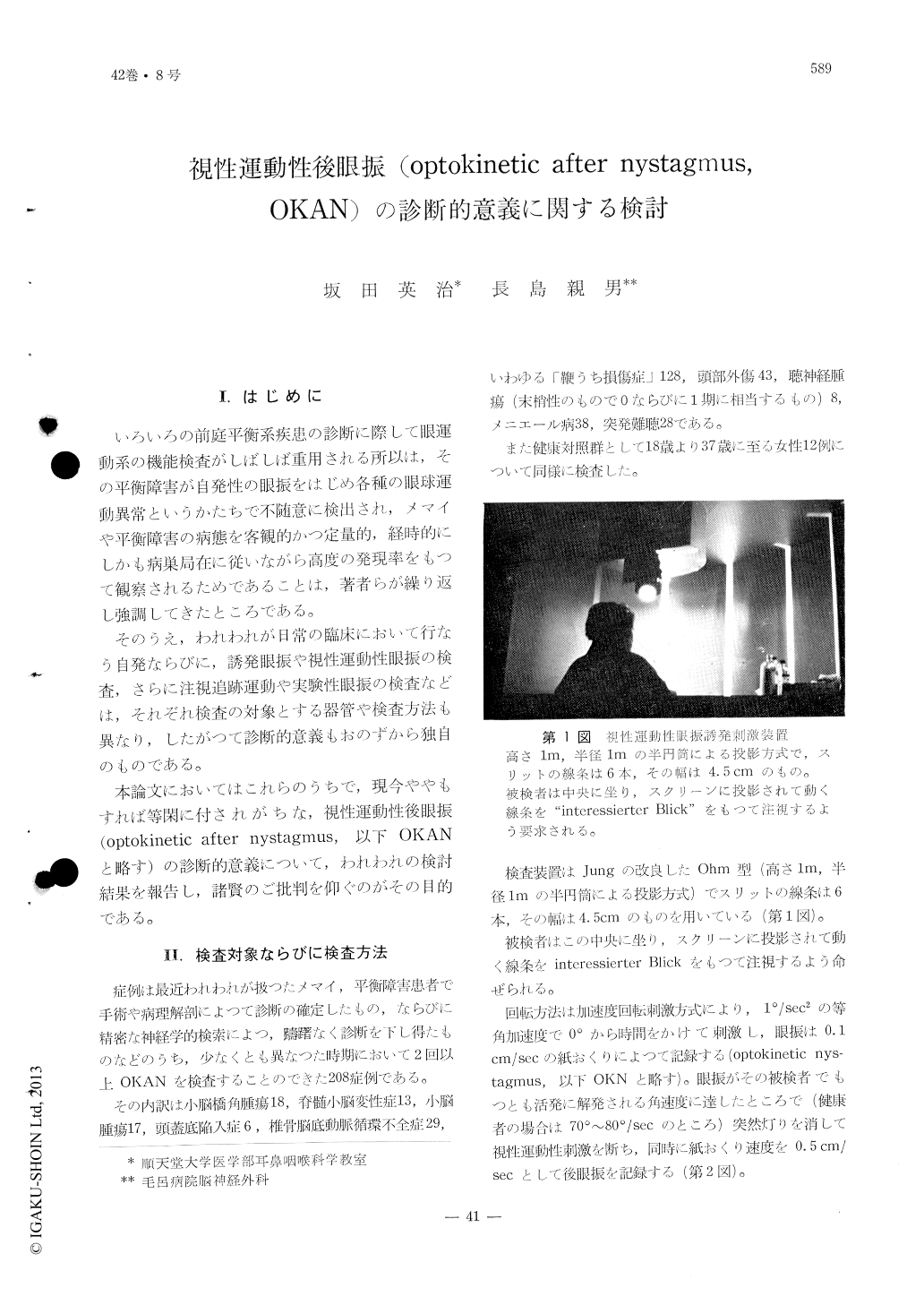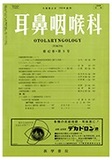Japanese
English
- 有料閲覧
- Abstract 文献概要
- 1ページ目 Look Inside
I.はじめに
いろいろの前庭平衡系疾患の診断に際して眼運動系の機能検査がしばしば重用される所以は,その平衡障害が自発性の眼振をはじめ各種の眼球運動異常というかたちで不随意に検出され,メマイや平衡障害の病態を客観的かつ定量的,経時的にしかも病巣局在に従いながら高度の発現率をもつて観察されるためであることは,著者らが繰り返し強調してきたところである。
そのうえ,おれわれが日常の臨床において行なう自発ならびに,誘発眼振や視性運動性眼振の検査,さらに注視追跡運動や実験性眼振の検査などは,それぞれ検査の対象とする器管や検査方法も異なり,したがつて診断的意義もおのずから独自のものである。
Optokinetic after nystagmus (OKAN) was studied on 208 cases affected vertigo and loss of balance and, also, on 12 cases of person in normal health.
OKAN in normal persons may last from 17 to 28 sec. at a time with eye movements from 14 to 32 times. However, there are a great deal of individual difference which may be influenced by such factors as, light, sounds and pain.
In cases of brain stem tumors the manifestation of optokinetic nystagmus (OKN) and OK AN may highly delayed. Yet in cases of circulatory disturbances involving the brain base the spinal cord, OKN may show an early manifestation but, OKAN may not be seen at all.
In cases of peripheral vestibular disturbances in comparison to that of the cerebellar one, OK AN on either side may show a significant wide difference.

Copyright © 1970, Igaku-Shoin Ltd. All rights reserved.


